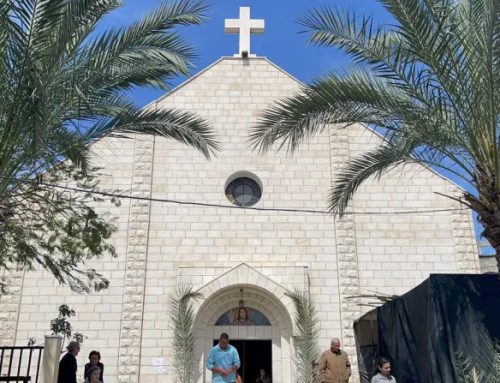Here is a translation of the address Benedict XVI gave today before reciting the midday Angelus with crowds at the papal summer residence of Castel Gandolfo.
Here is a translation of the address Benedict XVI gave today before reciting the midday Angelus with crowds at the papal summer residence of Castel Gandolfo.
* * *
Dear Brothers and Sisters,
The pastoral visit which I recently made to Bavaria was a deep spiritual experience, bringing together personal memories linked to places well known to me and pastoral initiatives toward an effective proclamation of the Gospel for today.
I thank God for the interior joy which he made possible, and I am also grateful to all those who worked hard for the success of this pastoral visit. As is the custom, I will speak more of this during next Wednesday’s general audience.
At this time, I wish also to add that I am deeply sorry for the reactions in some countries to a few passages of my address at the University of Regensburg, which were considered offensive to the sensibility of Muslims.
These in fact were a quotation from a medieval text, which do not in any way express my personal thought.
Yesterday, the cardinal secretary of state published a statement in this regard in which he explained the true meaning of my words. I hope that this serves to appease hearts and to clarify the true meaning of my address, which in its totality was and is an invitation to frank and sincere dialogue, with great mutual respect.
Now, before reciting the Marian prayer, I wish to reflect on two recent and important liturgical feasts: the feast of the Exaltation of the Holy Cross, celebrated on Sept. 14, and the memorial of Our Lady of Sorrows, celebrated the day after. These two liturgical celebrations summarize in a visual manner the image of the Crucifixion, which represents the Virgin Mary at the foot of the Cross, according to the description of the Evangelist John, the only Apostle who stayed with Jesus at the hour of his death.
But, what does it mean to “exalt” the Cross? Is it not, perhaps, scandalous to venerate an offensive gibbet? The Apostle Paul says: “We preach Christ crucified, a stumbling block to Jews and folly to Gentiles” (1 Corinthians 1:23). Christians, however, do not exalt any cross, but that cross which Jesus sanctified with his sacrifice, fruit and testimony of immense love.
Christ, on the cross, shed all his blood to free humanity from the slavery of sin and death. For this reason, the cross was transformed from a sign of malediction to a sign of blessing, from a symbol of death to a symbol par excellence of the love that is able to overcome hatred and violence and that generates immortal life. “O Crux, ave spes unica! O cross, our only hope,” sings the liturgy.
The evangelist writes: At the foot of the Cross was Mary (cf. John 19:25-27). Her sorrow is one with that of her son. It is a sorrow full of faith and love. On Calvary the Virgin participated in the salvific power of Christ’s sorrow, uniting her “fiat” with that of her son.
Dear brothers and sisters: Spiritually united to Our Lady of Sorrows, let us also renew our “yes” to God, who chose the way of the cross to save us. It is a great mystery which still takes place until the end of the world and that also calls for our cooperation. May Mary help us to pick up our cross every day and to follow Jesus faithfully on the path of obedience, sacrifice and love.
I greet all the English-speaking pilgrims and visitors present at today’s Angelus, and I thank you for your prayers during my pastoral visit to Bavaria. May your stay here in Castel Gandolfo and Rome be a time of spiritual enrichment, marked by the readiness to take up the cross and follow Jesus. Upon you and your loved ones, I invoke the grace and peace of Christ the Lord!





